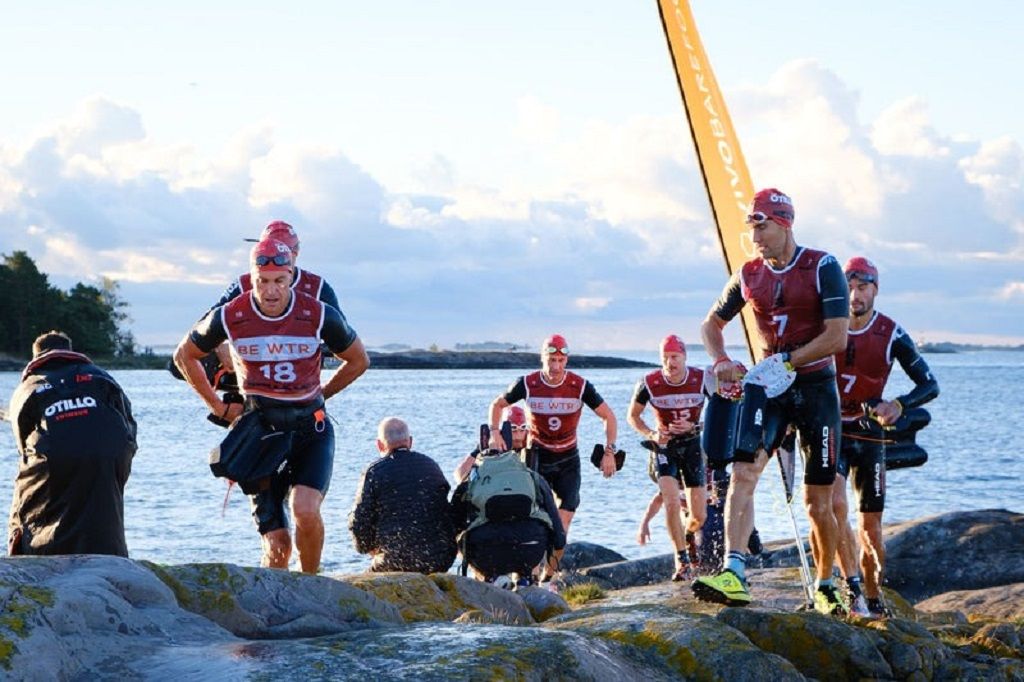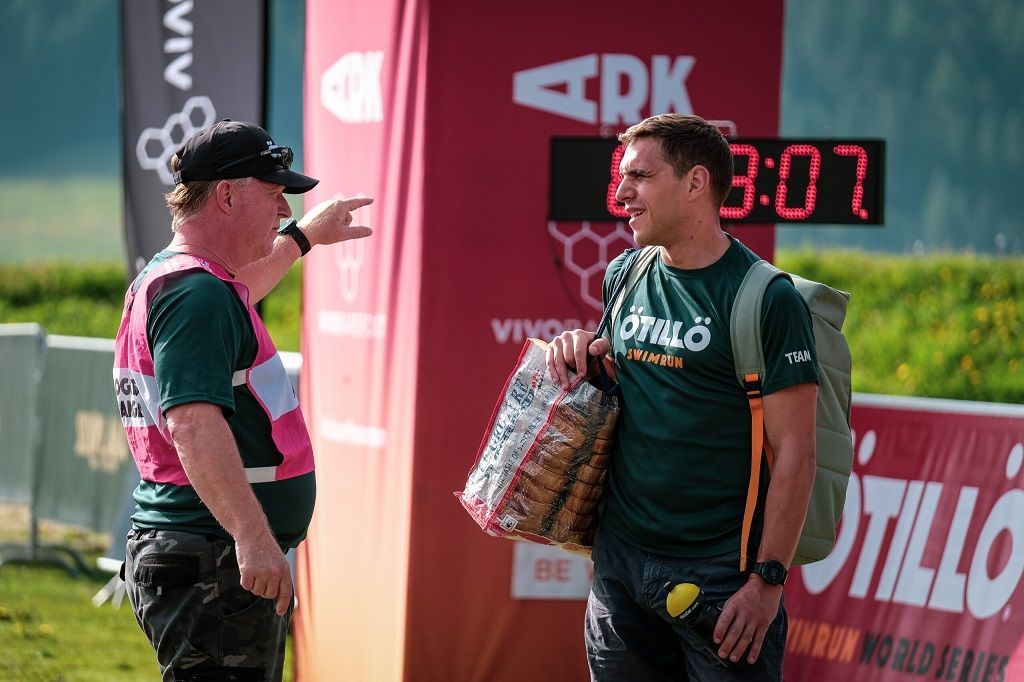
ÖTILLÖ World Championship: Everything You Need to Know
The ÖTILLÖ World Championship stands as the most prestigious event in the swimrun calendar, attracting elite athletes and adventurous amateurs from around the globe. This extraordinary race combines swimming and running through the stunning Stockholm archipelago, creating an unforgettable challenge that tests both physical endurance and mental fortitude. Whether you’re considering your first swimrun adventure or looking to progress from regional events like those offered by Swimrun The Riviera, understanding this championship is essential for any serious swimrun enthusiast.
Born from a friendly bet between friends in 2002, the race has evolved into a world-renowned endurance event that captures the imagination of adventure athletes worldwide. The unique format requires teams of two to navigate 26 islands, completing approximately 10 kilometers of open water swimming and 65 kilometers of trail running. However, what sets this apart from other multisport events is the seamless transition between disciplines, where participants wear the same gear throughout the entire race.
For those aspiring to compete, the otillo world championship requires careful preparation and often qualification through regional events. The selection process ensures that only the most prepared and capable athletes attempt this challenging course, maintaining the race’s reputation for safety and prestige.
The History and Evolution of ÖTILLÖ

The origins of ÖTILLÖ trace back to a casual conversation between four friends who decided to settle a debate about the fastest route between two restaurants in the Stockholm archipelago. What began as an impromptu adventure quickly transformed into an organized event that would define an entire sport. The first official race took place in 2006 with just 16 participants, a far cry from today’s international field of elite athletes.
Over the years, the event has maintained its core philosophy while evolving to meet modern safety standards and international participation demands. The race organizers have carefully preserved the original spirit of adventure while implementing necessary safety protocols and environmental protection measures. Additionally, the growing popularity has led to the establishment of qualifying races worldwide, creating a global swimrun community.
The championship has also sparked the creation of similar events across different continents, yet none have matched the original’s prestige and challenging nature. Therefore, earning a spot in the ÖTILLÖ World Championship remains the ultimate goal for swimrun athletes worldwide.
Race Format and Course Details
The ÖTILLÖ course covers 75 kilometers through the Stockholm archipelago, requiring teams to swim approximately 10 kilometers and run 65 kilometers across 26 different islands. Teams must stay within 10 meters of each other throughout the entire race, adding a crucial strategic and psychological element to the physical challenge. This proximity rule transforms individual endurance into a test of partnership and communication.
The swimming segments vary in length from short 50-meter crossings to challenging 1.5-kilometer open water swims. Water temperatures typically range from 14-18°C (57-64°F), making wetsuits essential equipment. However, participants must wear the same wetsuit for both swimming and running segments, creating unique gear optimization challenges.
Running portions traverse diverse terrain including rocky coastal paths, forest trails, and steep island climbs. The varied landscape demands versatile athletic ability and mental adaptability. Furthermore, navigation skills prove crucial as teams must locate transition points and route-finding opportunities throughout the course.
Training Requirements and Preparation
Successful ÖTILLÖ participation demands comprehensive training that addresses multiple athletic disciplines simultaneously. Athletes typically train 15-20 hours per week, focusing on swimming technique, running endurance, and transition efficiency. The unique demands of wearing running shoes while swimming and wetsuits while running require specific adaptation periods.
Swimming preparation should emphasize open water skills, including navigation, breathing patterns in choppy conditions, and swimming in a wetsuit. Pool training provides technique refinement, but ocean or lake swimming better simulates race conditions. Additionally, practicing swimming in running shoes helps develop the specific coordination required during the event.
Running training must accommodate the weight and restriction of wetsuit material. Long trail runs wearing neoprene help build specific muscle memory and heat management strategies. Therefore, successful athletes often incorporate brick workouts that combine swimming and running within single training sessions.
Equipment and Gear Considerations
The ÖTILLÖ equipment rules create unique gear optimization challenges that significantly impact race performance. Participants must complete the entire course wearing the same wetsuit, running shoes, and safety equipment. This requirement eliminates traditional triathlon-style transitions while creating specific gear selection pressures.
Wetsuit selection balances swimming efficiency with running mobility and heat management. Thinner neoprene provides better running comfort but offers less swimming warmth and buoyancy. However, thicker suits improve swimming performance while potentially causing overheating during running segments.
Footwear represents another critical decision point, as shoes must provide adequate drainage, traction on wet rocks, and comfort during extended running. Many athletes drill drainage holes in their shoes and select models with quick-drying materials. Additionally, safety equipment including whistles, emergency food, and communication devices adds weight but ensures participant safety throughout the challenging course.
Qualification Process and Entry Requirements
Entry to the ÖTILLÖ World Championship follows a selective qualification system designed to ensure participant safety and race quality. Most competitors earn their spots through qualifying races held worldwide, though a limited number of entries are available through lottery systems. The qualification process typically requires completing a designated swimrun event within specific time cutoffs.
Regional qualifying events vary in difficulty and format, but all maintain the core swimrun principles of continuous movement between swimming and running. Some qualifiers focus on shorter, more technical courses, while others emphasize endurance over terrain diversity. However, all qualifying events require team-based participation and adherence to proximity rules.
The application process opens months in advance and typically fills within hours due to the race’s prestige and limited field size. Therefore, serious participants often register for multiple qualifying events to maximize their chances of earning a championship entry.
What Makes ÖTILLÖ Unique
Several factors distinguish the ÖTILLÖ World Championship from other endurance events and swimrun races. The natural beauty of the Stockholm archipelago provides an unparalleled backdrop that combines athletic challenge with scenic splendor. The course’s island-hopping format creates a sense of adventure and exploration that transcends typical racing experiences.
The team-based format adds psychological and strategic dimensions rarely found in individual endurance events. Partners must coordinate pacing, navigate together, and provide mutual support during challenging segments. This collaboration requirement often creates lasting friendships and memorable shared experiences beyond the competitive aspect.
Environmental integration represents another distinguishing feature, as the race route follows natural pathways and waterways rather than constructed courses. Additionally, the event’s commitment to environmental preservation ensures that this pristine location remains available for future generations of athletes to experience.
Tips for First-Time Participants
Newcomers to the ÖTILLÖ World Championship should prioritize preparation over performance expectations. The unique demands of continuous swimrun transitions require specific adaptations that cannot be fully replicated in training. Therefore, focusing on completion rather than competitive placement often leads to more satisfying race experiences.
Partner selection proves crucial for success and enjoyment. Compatible pacing, communication styles, and stress management approaches contribute significantly to team performance. However, flexibility and adaptation remain essential as race conditions and circumstances often require tactical adjustments.
Logistics planning deserves careful attention, as the remote island locations limit support opportunities. Pre-race reconnaissance, if possible, helps familiarize teams with key transition points and navigation challenges. Additionally, developing contingency plans for common issues like equipment problems or minor injuries enhances race day confidence.
Read More Also: Five Popular Essay Writing Services
Conclusion
The ÖTILLÖ World Championship represents the pinnacle of swimrun achievement, combining athletic excellence with natural beauty in an unforgettable endurance challenge. From its humble origins as a friendly bet to its current status as the sport’s most prestigious event, the race continues to inspire athletes worldwide while preserving its core values of adventure and environmental respect.
Success in this championship requires comprehensive preparation, appropriate equipment selection, and strong partnership dynamics. The unique format challenges participants to excel across multiple disciplines while maintaining team cohesion throughout the demanding course. However, the rewards extend far beyond athletic achievement, offering transformative experiences in one of the world’s most beautiful natural settings.
For those considering this ultimate swimrun challenge, careful preparation and realistic expectations provide the foundation for success. The journey to the starting line, whether through qualification races or lottery selection, often proves as rewarding as the race itself, connecting athletes with a global community united by their love of adventure and endurance.
Read More Also: Oklahoma City’s Online Learning Resources
Frequently Asked Questions
What is the average completion time for the ÖTILLÖ World Championship?
Elite teams typically finish in 9-11 hours, while recreational participants often require 12-15 hours to complete the course. The race has a maximum time limit of 16 hours, ensuring all finishers complete the course in daylight conditions.
Do I need previous swimrun experience to participate?
While not mandatory, previous swimrun experience is highly recommended. The unique demands of continuous swimming and running in the same gear require specific adaptations best developed through training and shorter events before attempting the world championship.
What happens if weather conditions become dangerous during the race?
Race organizers continuously monitor weather and water conditions, with the authority to modify or cancel portions of the course if safety concerns arise. The Stockholm archipelago’s sheltered waters typically provide reasonable protection from severe weather conditions.
Can individual athletes participate, or must I compete as part of a team?
The ÖTILLÖ World Championship exclusively uses a team format with two-person partnerships. This requirement reflects the race’s core philosophy and safety considerations, as partners provide mutual support and emergency assistance throughout the challenging course.
How far in advance should I begin training for the championship?
Most successful participants train specifically for 6-12 months before the event, building upon an existing fitness foundation. The unique gear requirements and technique adaptations require sufficient time for physical and mental preparation to ensure safe and enjoyable race completion.







